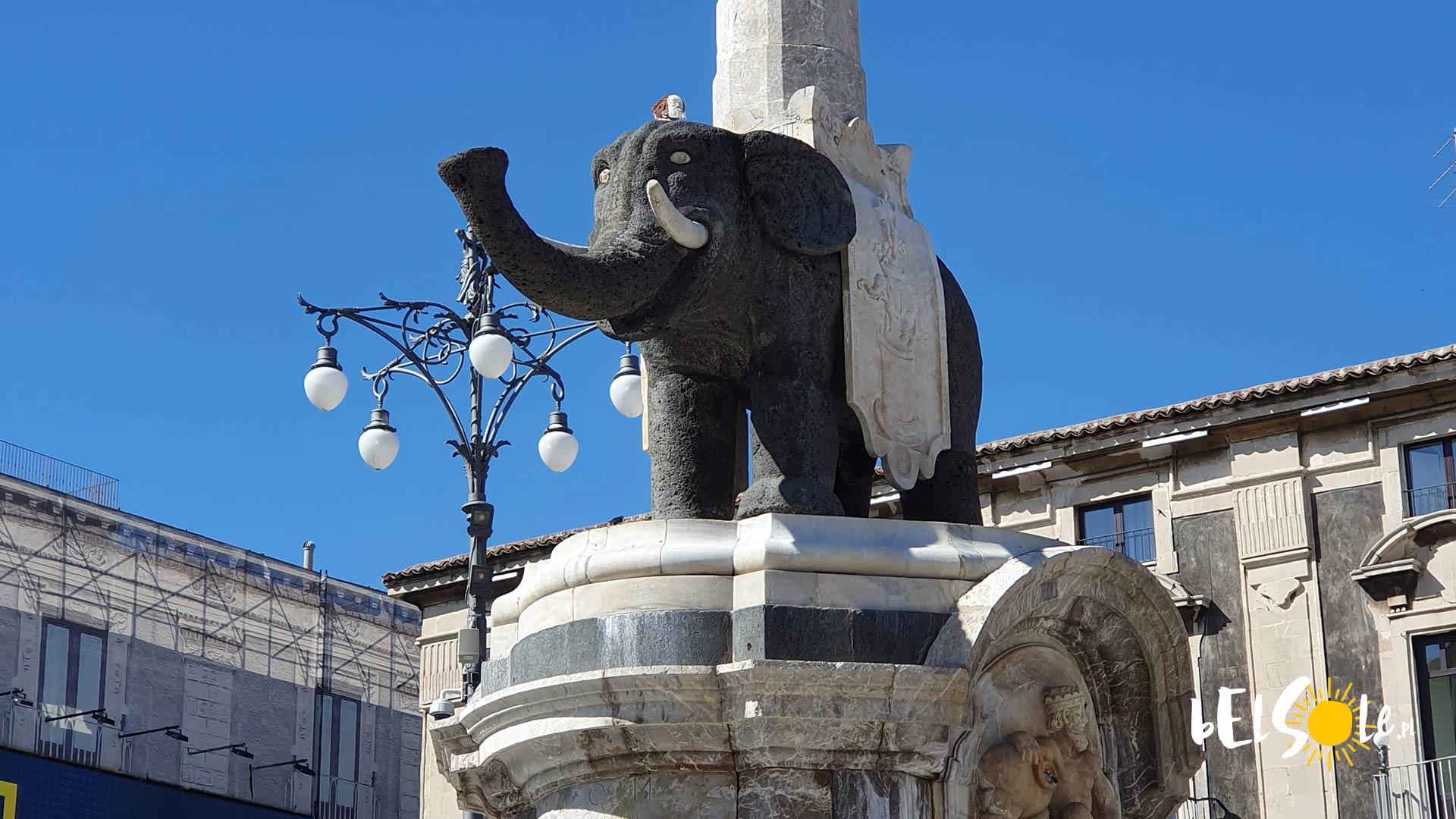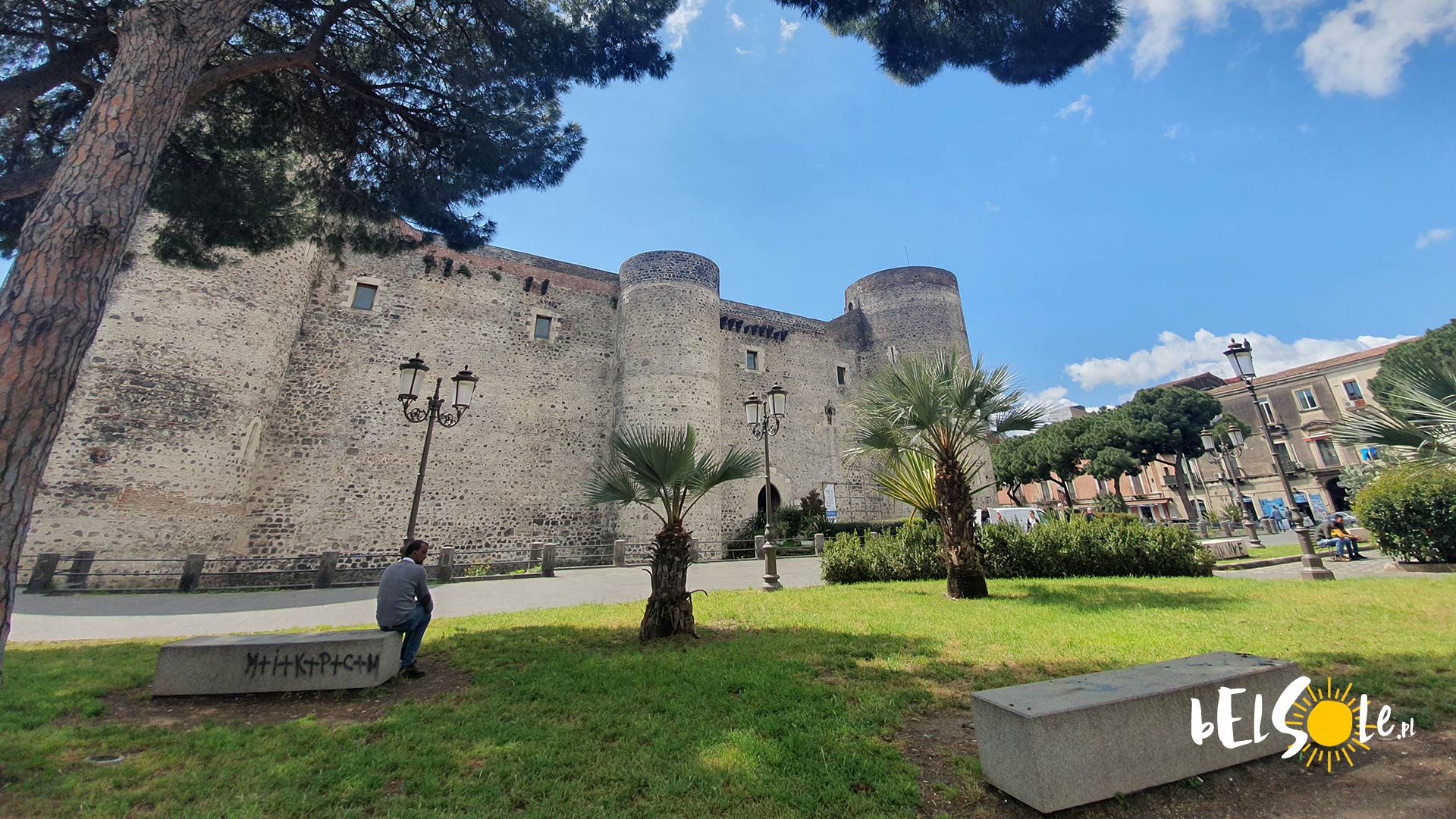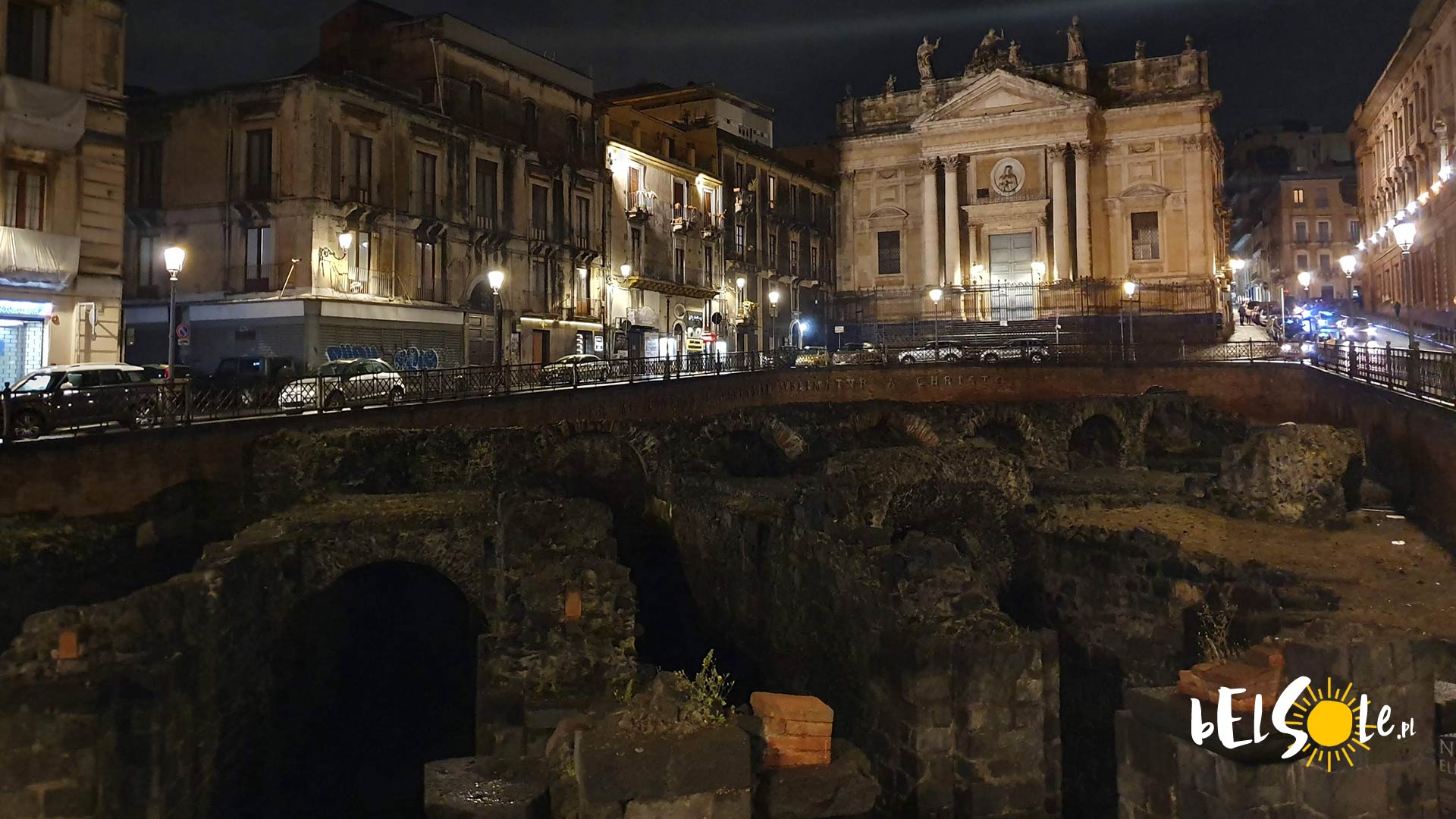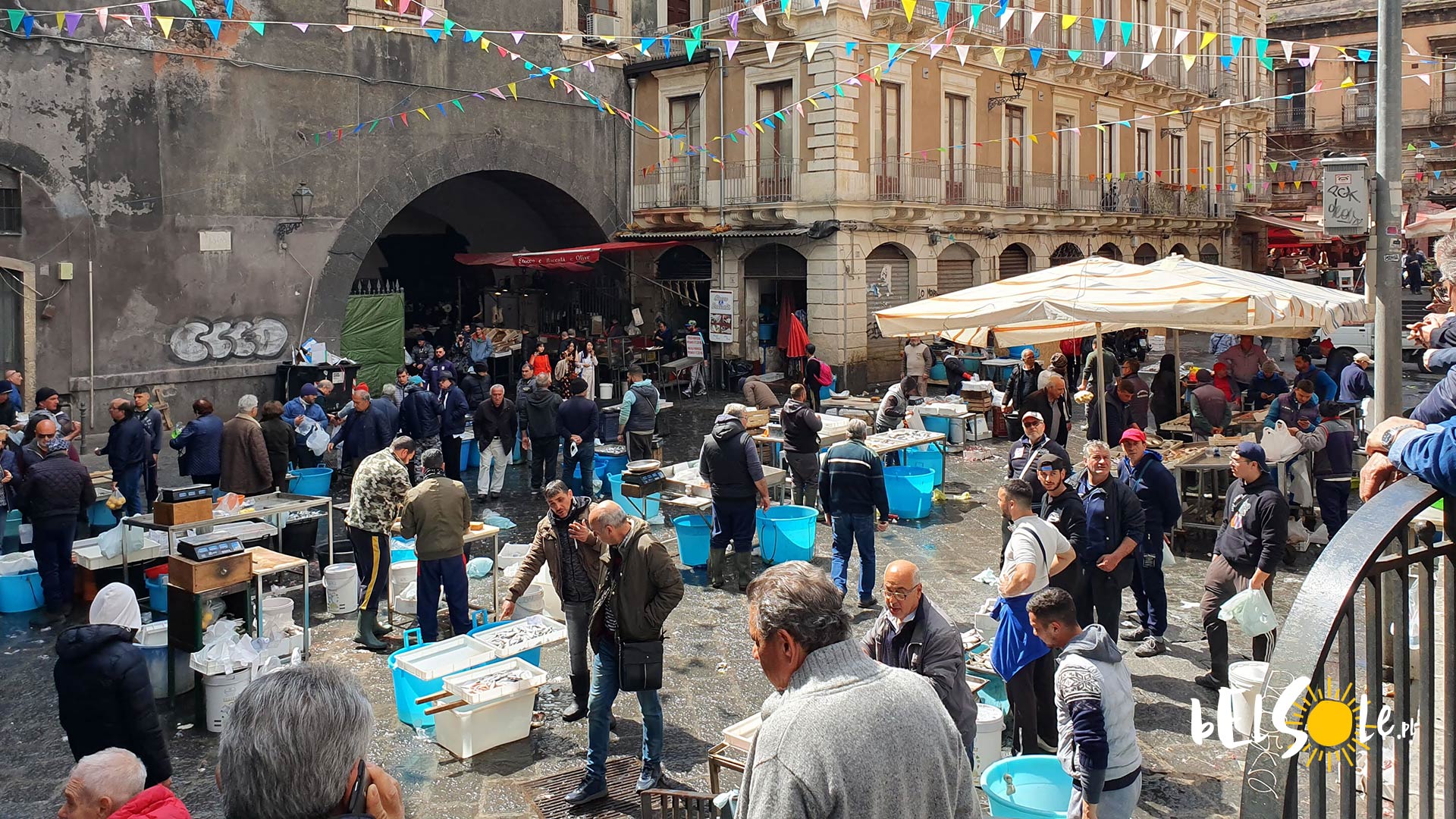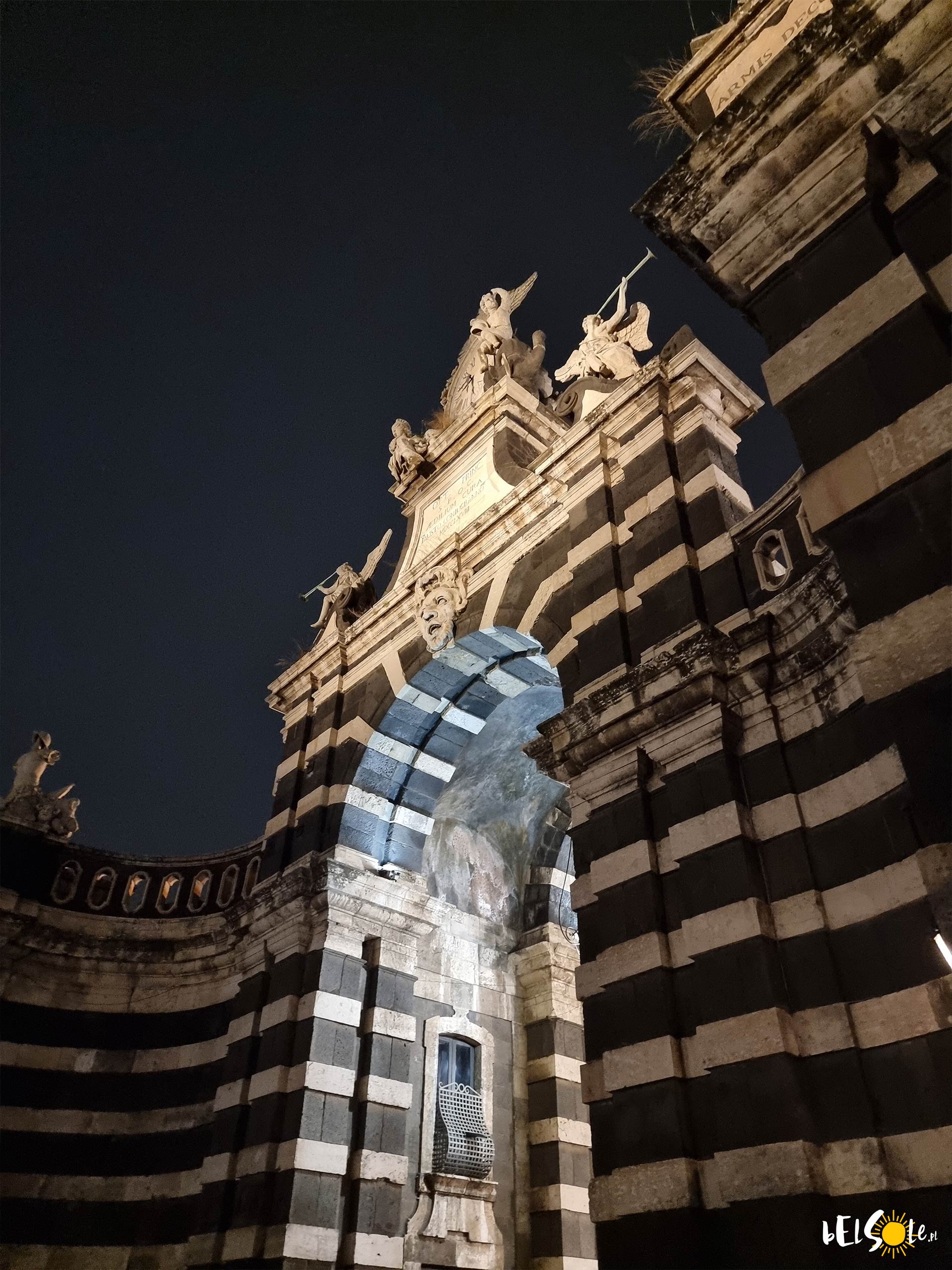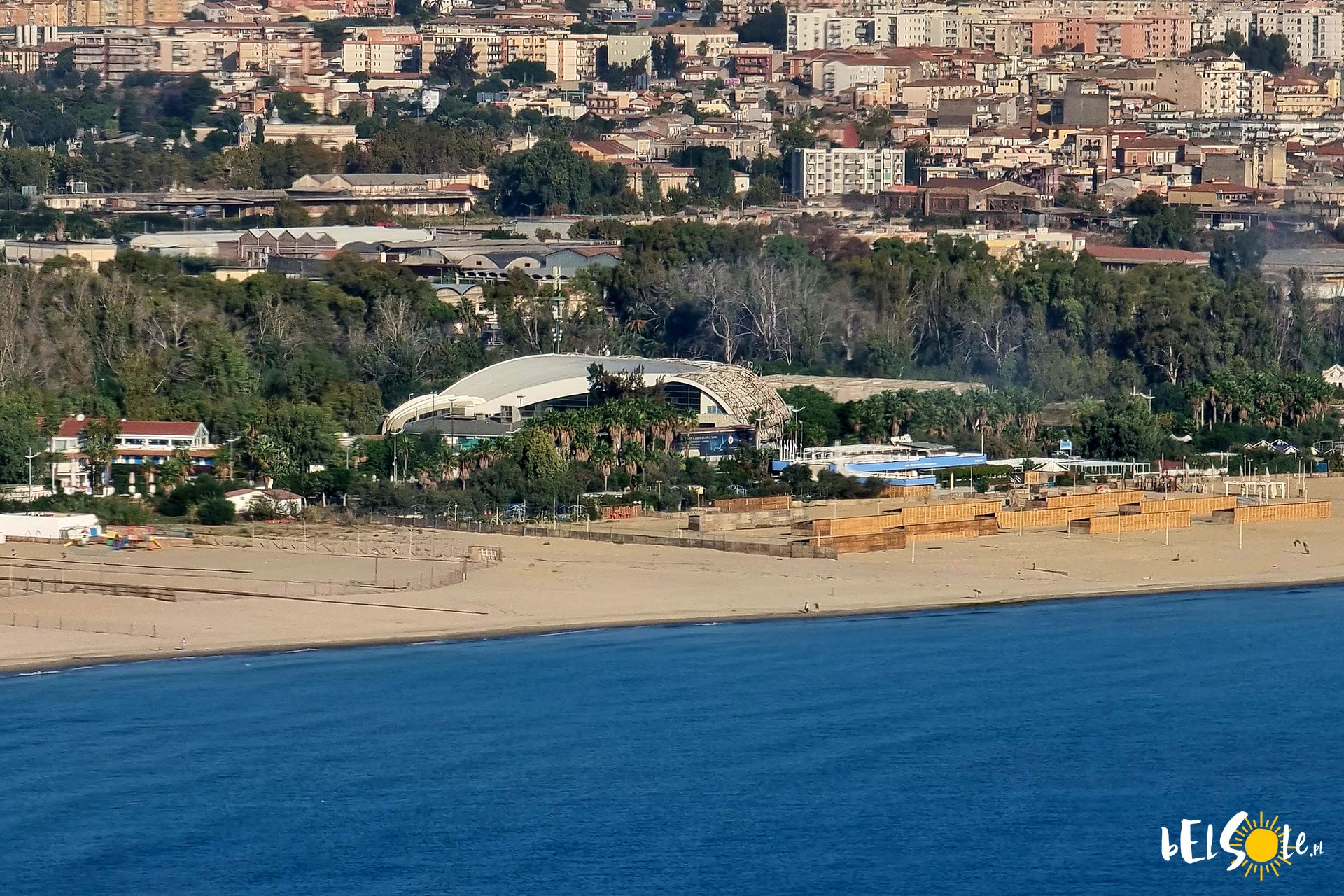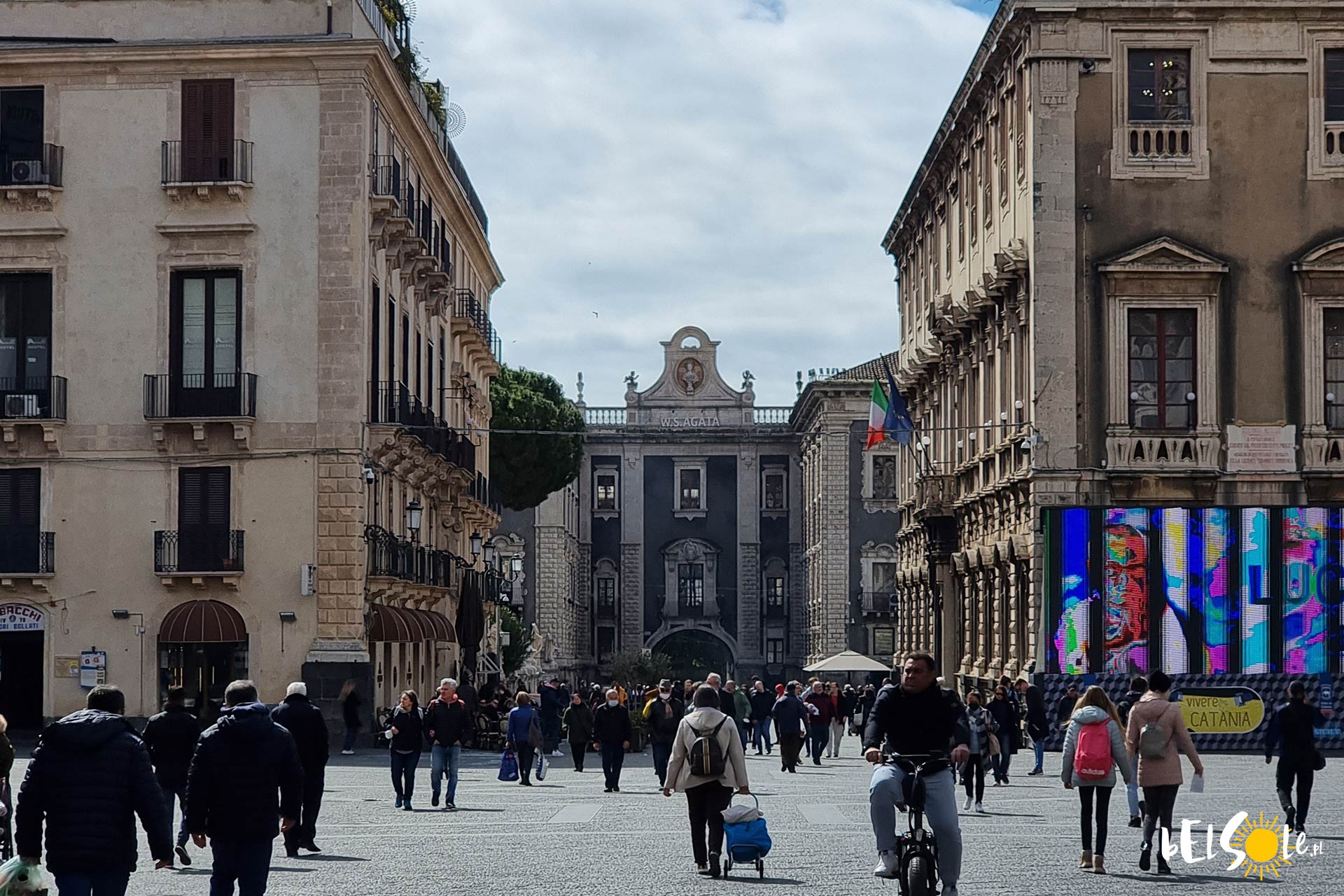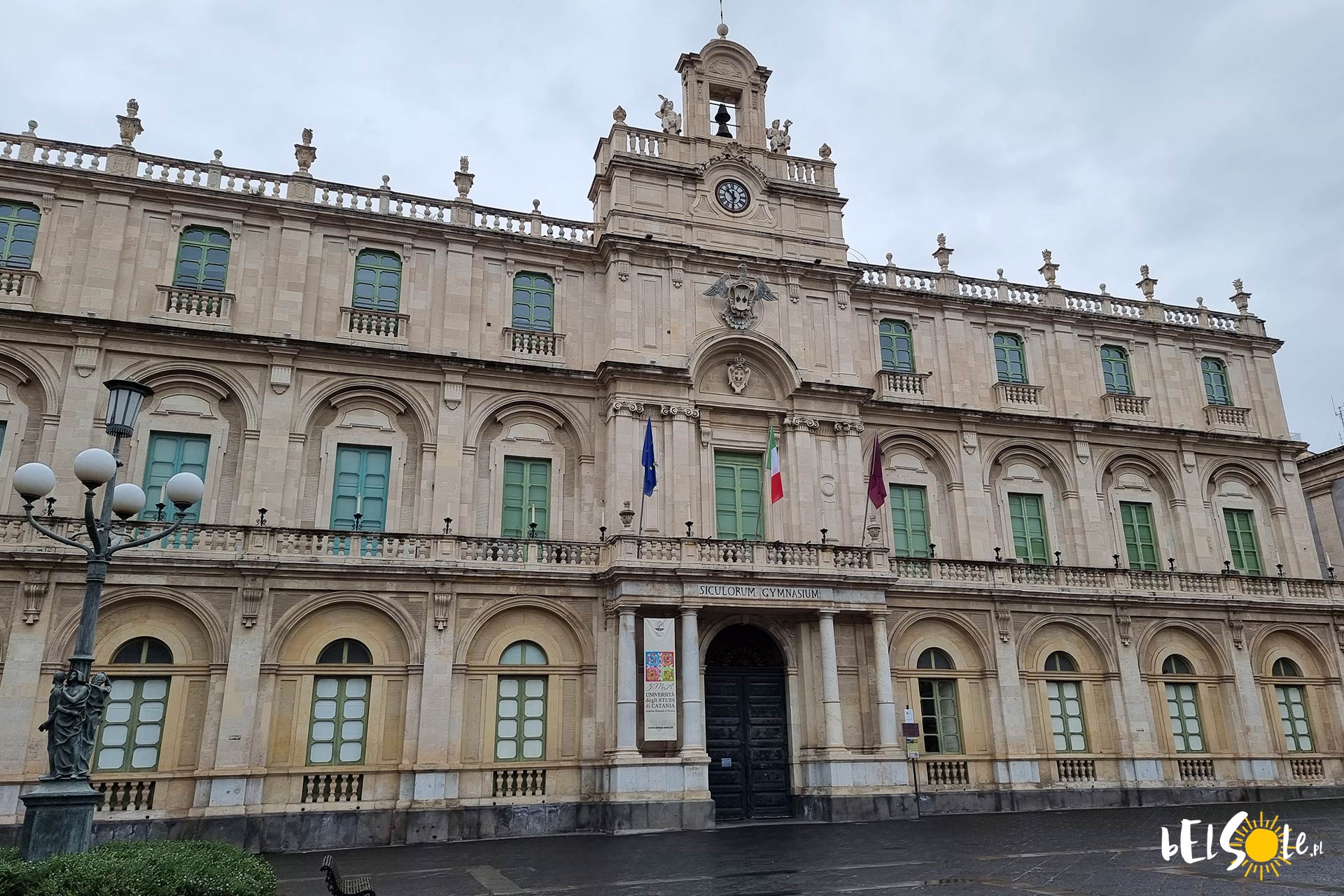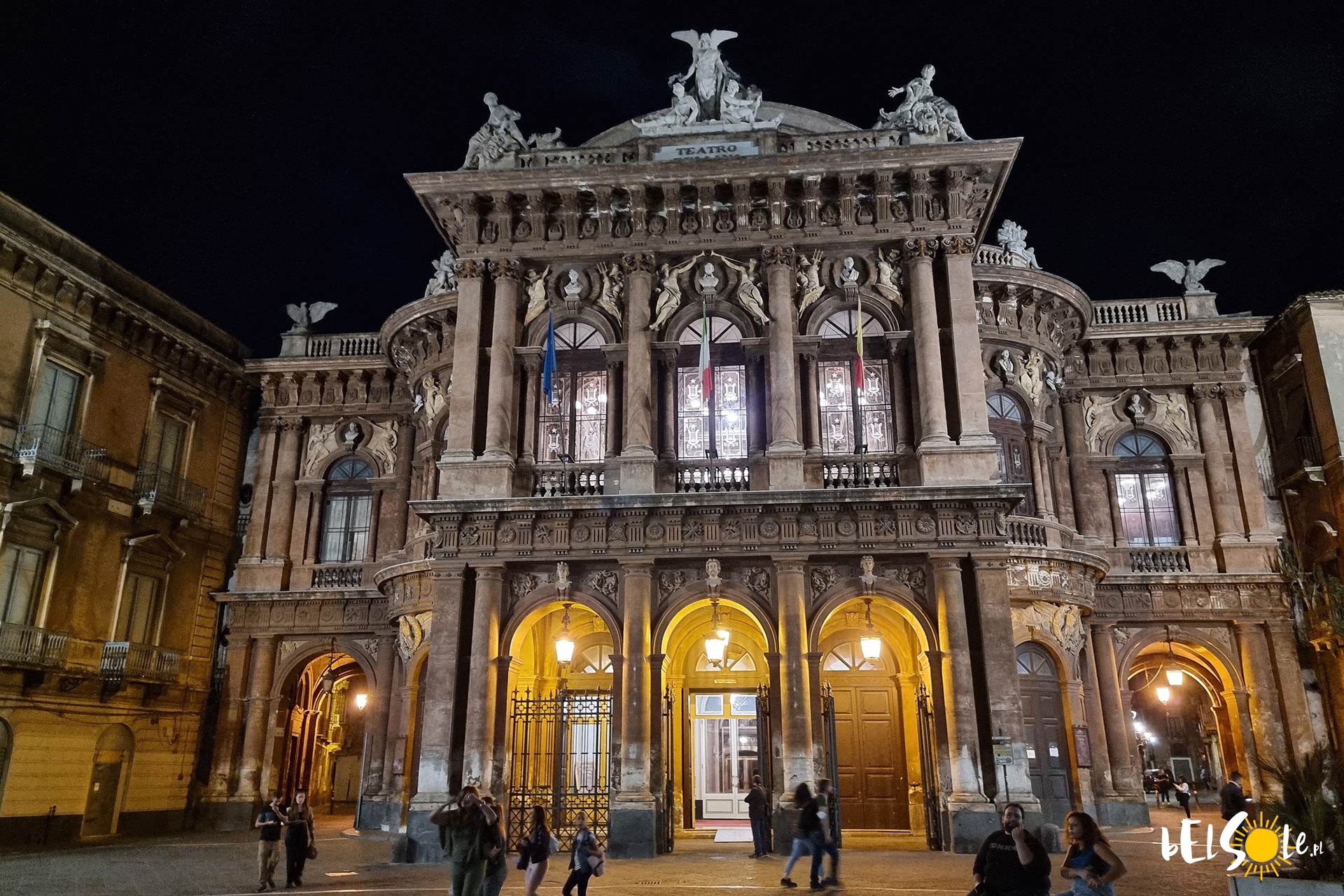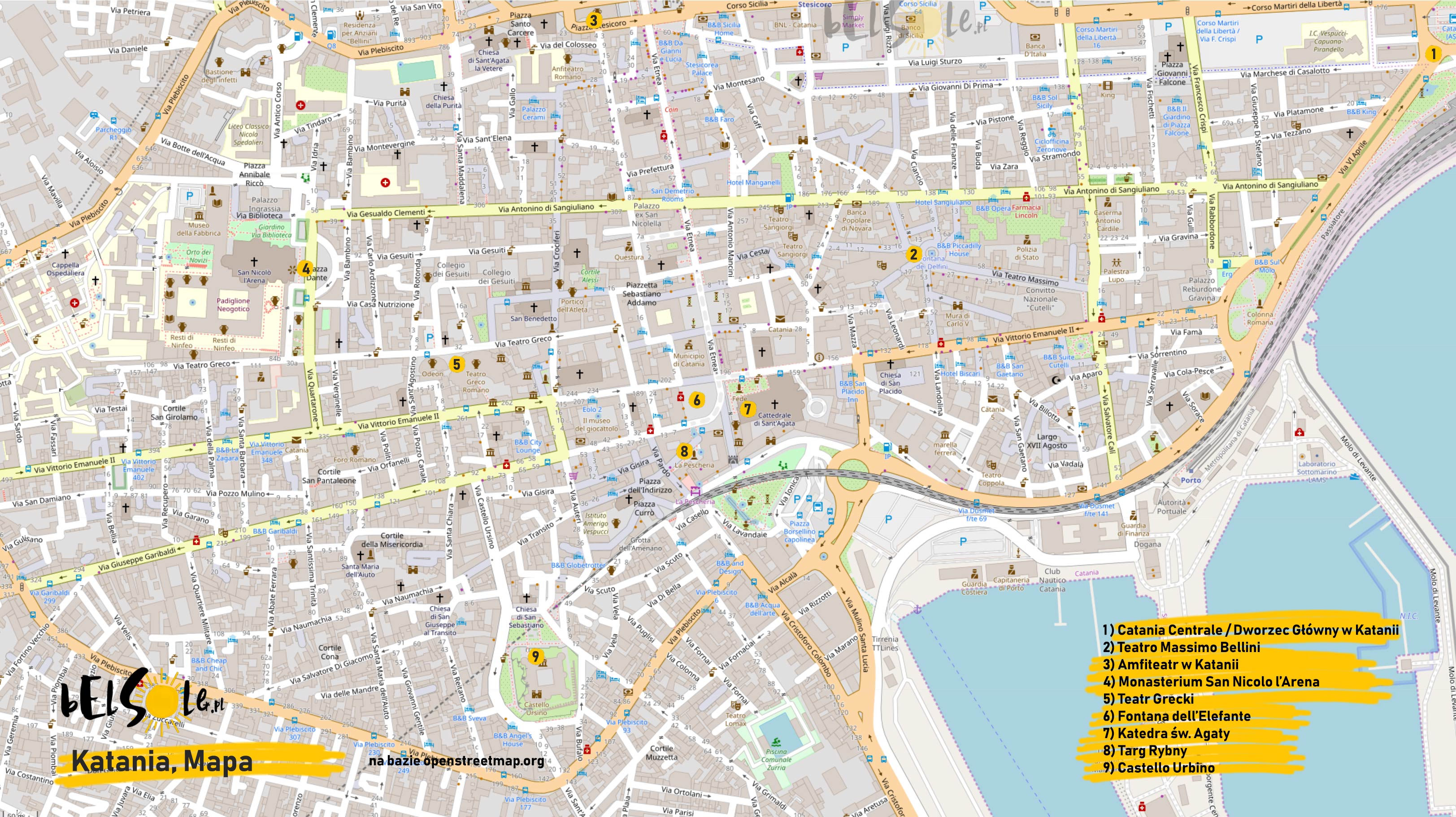Catania, right there with Palermo, is one of the largest cities in Sicily. Its location near Mount Etna makes it an incredibly appealing tourist destination, though the city stands on its own two feet even without the volcano. What should you see in Catania? We’ll give you a few ideas today.
Etna volcano
An active volcano in Sicily
It’d be impossible to make a best-of list of Catania without Etna, located 12 miles away from the city. It’s one of the tallest active volcanoes in Europe, currently reaching 3,357 metres above sea level (and it’s constantly changing a tiny bit due to volcanic activity). There are plenty of tours to Mount Etna from Catania, including driving up to the volcano or hiking. You can also take a bus to the car park and then hop onto a cable car which gets you to 2,500 metres above sea level. The views are, as you can imagine, absolutely spectacular. It’s as much a must-see as it gets.
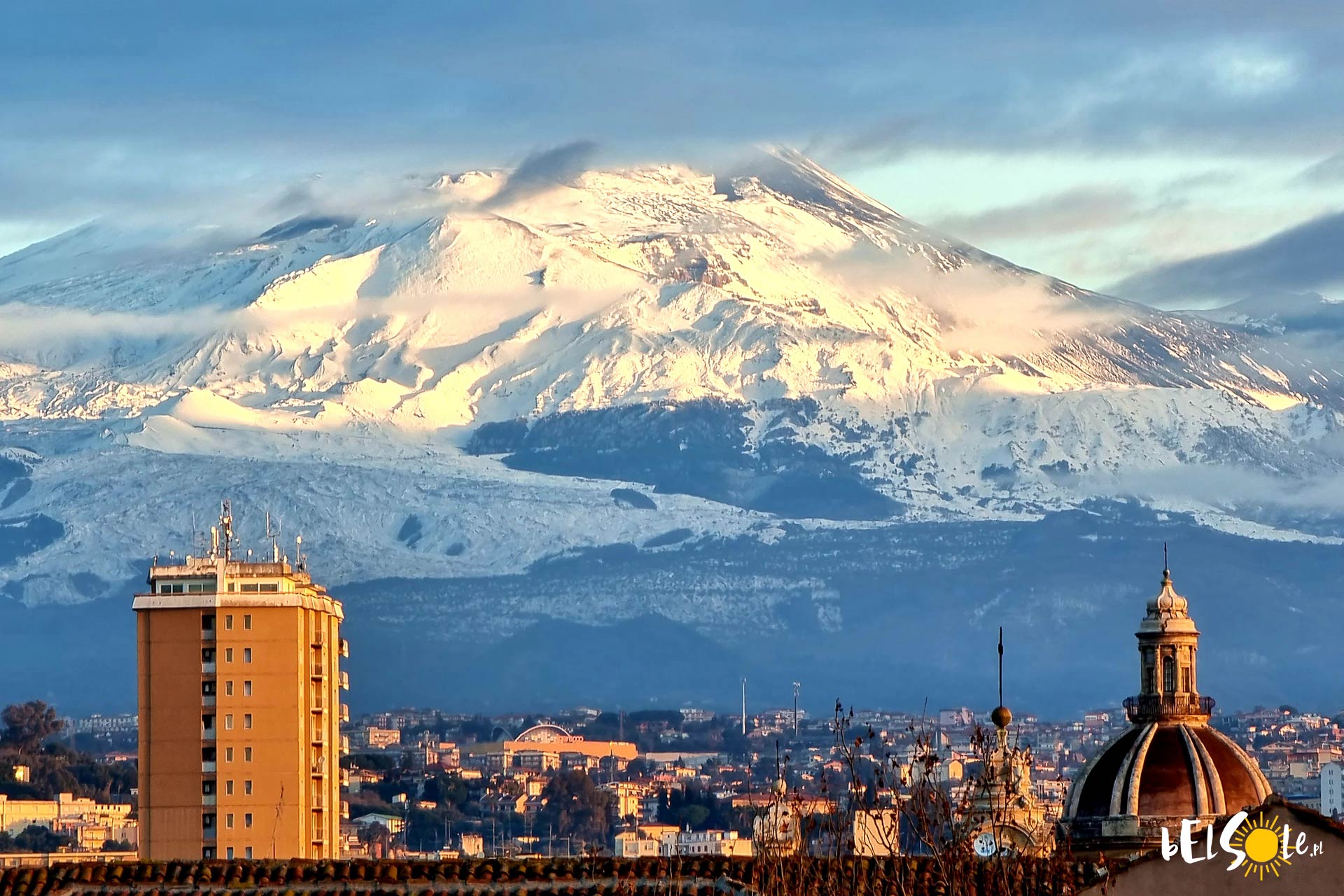
We’ve already gone over the available options for climbing Etna in a separate article.
Cathedral of St Agatha in Catania
The most important church in Catania
If we had to conjure up a list of the most beautiful churches in Sicily, we’d have to say the first place would go to the Monreale Cathedral in Palermo. Right in the second place, though, we’d put the Cathedral of St Agatha in Catania. The cathedral was built here in 1093 on top of the site once occupied by ancient roman baths. As you can imagine, though, Etna doesn’t care if it’s a beautiful church or not – the cathedral was destroyed twice by earthquakes.
The present appearance must be attributed to the work that was carried out between 1734 and 1761. The façade is made of white marble and has columns from the ancient Roman theatre. You will also find many statues of St Agatha, the city’s patron saint. Every year, on 5 February, a feast day is celebrated in her name. In front of the altar is the tomb of Vincenzo Bellini, the famous musician from Catania.
The Fuente del Amenano Fountain
And the Elephant Fountain!
One of the most famous fountains in Sicily is located just a few steps from the Catania Cathedral, on the Piazza del Duomo. The Fuente del Amenano Fountain, made of marble, was built in 1867, designed by Tito Angelini. The fountain depicts the figure of a young man with a horn of plenty and is a symbol of the Amenano River flowing beneath the city.
The second fountain, which we’d argue much cuter, is the famous Elephant Fountain. The elephant is made of black basalt (which is a fancy way of saying lava) and carries an Egyptian obelisk on its back. The elephant is also the symbol of Catania’s patron saint, St Agatha. It was erected in 1737. We may mention that a species of dwarf elephants did roam the lands of Sicily back in the day. Like, hundreds of thousands of years ago.
There are many cafés and pretty buildings around the square. It’s the perfect place to relax for a while, especially in the evenings.
Castello Ursino Castle
A medieval castle in the centre of Catania
Another notable place in Catania is the famous Castello Ursino Castle. The history of the castle dates back to the 12th century – it was built between 1239 and 1250 for King Frederick II Hohenstauf and was considered an impregnable fortress at the time.
The castle played a significant role in 1295 during the so-called Sicilian Vespers, a peasant uprising. The structure lost its importance over time and the fortress was converted into a prison. The Catania Castle is one of the few buildings to have survived the devastating earthquake of 1693. Unfortunately, the castle had to succumb to lava from Mount Etna.
Since the interwar period in the 20th century, there have been efforts to restore it. In 1934, a museum was opened here, which can still be visited today. It houses the Civic Museum of Catania collection. Here, you can find various paintings and archeological artefacts donated from private collections or acquired by the city. In addition, the museum regularly hosts seasonal exhibitions dedicated to national and international artists. In the evenings, it’s a popular meeting place for young people.
Catania’s Amphitheatre
Ruins of an ancient theatre
You don’t need to go to Rome to admire ancient ruins in Italy. Not far from the Piazza del Duomo, you have an old Roman amphitheatre. The structure was built during the times of the Roman Empire, probably around the 2nd century AD. It was the largest amphitheatre in Sicily.
The arena of the amphitheatre had a diameter of 70 metres. According to contemporary estimates, the structure could accommodate up to 15,000 visitors. The building, given its age, is not in such a bad shape.
San Nicolò l’Arena, Catania
A beautiful church in Catania
The monastery of San Nicolo l’Arena in Catania is not often visited by tourists, which is a shame. It is the second largest Benedictine monastery in Europe and an example of the wealth once enjoyed by the Benedictine order. It is also the largest church in Sicily, built on the site of a Renaissance temple that was destroyed during the earthquakes of 1669 and 1693.
Formally, the temple’s façade was never completed, which, together with the surviving ancient columns, gives the building even more charm. It now hosts a part of the University of Catania, the Department of Humanities to be exact, and has been listed on the UNESCO World Heritage Site.
You can view a tiny bit on your own, though there are off-limits areas that you can only see with a guide. Not all tours are in English, so double-check that you’re not getting a French walkthrough by accident.
Catania’s fish market
A Piscaria Mercato del Pesce
Another (arguably) charming spot in Catania, though it’s certainly not for everybody. This is the fish market in the centre of Catania. Such markets and bazaars are always a good way to peep into the local life of a town, and this one is no different.
You can stock up on fresh fish here in the morning, though you’ll also find fruits, vegetables and meats. The market’s open from Monday to Saturday, 7am to 1 or 2pm. Of course, if you’re not into fish, skip out on this one. It’s easy to get nauseous from the smell.
Orto Botanico dell’Università di Catania
Catania Botanical Garden
If you’re into flora, then we’ve got good news for you. The botanical garden operated by the University of Catania is not large but is still a very fun experience. You can admire all sorts of tropical and rare plants, cacti and palm trees. The Orto Botanico is divided into several thematic gardens with greenhouses. The whole garden is very beautiful and well maintained. The garden is relatively old, dating back to 1858, when it was established by Francis Roccaforte Tornabene.
Porta Garibaldi arch
Triumphal arch in Catania
The Porta Garibaldi, also called Porta Ferdinandea, is a triumphal arch located on Via Giuseppe Garibaldi in Catania. You can see the Catania Cathedral through the gate, on the other side of Via Garibaldi. It was originally built as a monument to celebrate the marriage of Ferdinand I of the Two Sicilies and Maria Carolina d’Asburgo-Lorena, an Austrian princess.
The ornate structure is made of alternating swipes of white stone and dark lava blocks. At the top, you’ll see a massive clock with various figures. It’s perhaps not as grand as it must’ve been back in the day, but it’s still a sight to behold.
Spiaggia San Giovanni Li Cuti
Beach with volcanic rocks
San Giovanni Li Cuti is a beach worth visiting even if you have no interest in swimming or sunbathing. The beach is covered with black volcanic rocks which makes it look incredible. It’s a good place for a moment of break from all the fancy monuments and the history and all of that. Instead, you’ll find small fishermen boats coming into the small cove day by day. It’s also quite clean, so it does make for a nice beach if you do want to take a seat for a moment.
Spiaggia Lido Azzurro
Sandy beach in Catania
If you’d like more of a traditional beach experience, there’s also a great sandy beach in Catania. It’s close enough that you don’t have to commute there. It’s not always the absolute cleanest, though, especially in the low season, but the water is very nice. You also have lots of greenery all around, which makes for a beautiful backdrop.
Porta Uzeda
The historic gate in Catania
Back to history, though. You can find another beautiful gate on Piazza del Duomo. The gate was named after Paceco Uzeda, who supported the efforts to rebuild the city after the massive earthquake. You can also get to the aforementioned fish market when walking in the direction of the gate.
Piazza Universita
A popular square in the centre of Catania
There’s another beautiful square near Piazza del Duomo where you’ll invariably see lots of people gather. It houses a palace that is now a university – you can enter its courtyard and stroll around. Opposite to the university building is the San Giuliano Palace with a façade made of coloured marble. The Piazza is a popular spot for tourists and locals to rest before continuing their journey. Of course, you’ll also find several bars and cafes in the square where you can take a moment and listen to street musicians.
Bellini Gardens
Large city park
A green spot on the map of Catania. These gardens are a fantastic place to relax under the shade when the heat gets going. The first things that’ll likely catch your eye in the gardens is a clock on the grass in front of a charming little fountain and a very nice gazebo, perfect for photo shoots.
Via Crocifieri
A charming street in Catania
You’ll find the lovely Via Croferi street running parallel to the crowded Via Etnea. There are some great restaurants here, like the Trattoria da Mario, where you can try all sorts of delicious local dishes. You can also find the Church of St Francis of Assisi, the Arco di San Benedetto and the Church of St Julian here.
Market on Piazza Carlo Alberto
Street market in Catania
Not many tourists find this place intentionally, they’ll usually stumble upon it by chance. In the square in front of the Basilica of Santuario del Carmine, there’s a market opening every morning. You can buy local vegetables, fruits and cheeses or everyday items. It’s quite a bustling place with very overly enthusiastic vendors. In the evening or at night, however, it’s a great place for a stroll.
Teatro Massimo Bellini
The building of the city’s opera house
The Teatro Massimo Bellini is a wonderful opera house on Piazza Vincenzo Bellini, named after a local composer, Vincenzo Bellini. It has a capacity of 1,200 seats and excellent acoustics. The ceilings in its incredible hall are decorated with frescoes by Ernesto Bellandi, including scenes from Bellini’s most well known operas. The curtain is also quite stunning in its own right, depicting the victory of the people of Catania over the Libyans. It was made by Giuseppe Sciuti.
Palazzo Biscari
Residence of the Biscari family
The Palazzo Biscari is a palace once occupied by the Biscari family. The earthquake of 1693 destroyed the previous palace, but the Prince of Balari decided that they’ll have to rebuild it – the new building was finished in 1763.The palace has more than 700 rooms and several Rococo-style chambers, full of frescoes and decorations. Don’t miss out on a visit to the ballroom, added in 1766, to see the frescoes by painter Sebastiano Lo Monaco.
Among notable visitors is Goethe, who wrote about the visit to the beautiful palace in his Italian Journey. The building is still inhabited by descendants of the Biscari family and its main halls are used for social and cultural events. Still, the highly decorative interiors are open for guided tours.
Map of the attractions of Catania
What to see in Catania?
1) Catania Centrale / Catania Central Station
2) Teatro Massimo Bellini
3) Catania Amphitheatre
4) Monasterium San Nicolo l’Arena
5) Greek Theatre
6) Fontana dell’Elefante
7) Cathedral of St Agatha
8) Fish market
9) Castello Urbino
See also:







